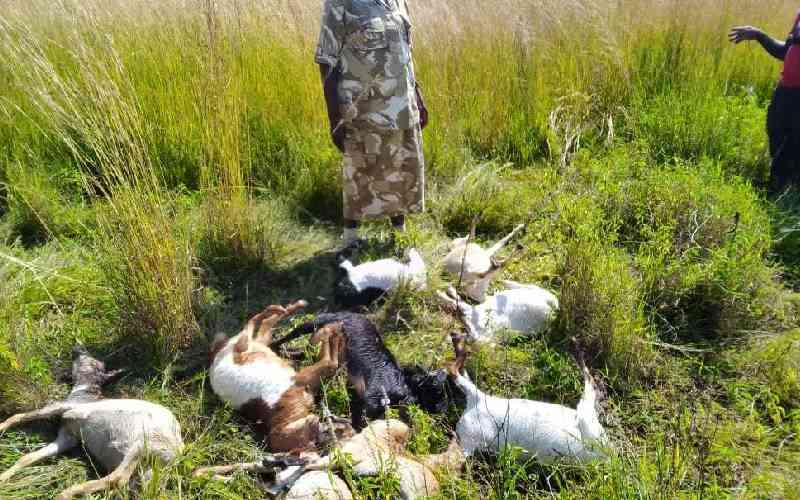Wildlife-based tourism contributes nearly 14 per cent to Kenya’s Gross Domestic Product. Consequently, one in every 10 Kenyans in formal employment works in the wildlife tourism sector. Indeed, lions, leopards, elephants, rhinos and all our famous wildlife, are the most unsung heroes of our economy. It is therefore heartening news that most of our wildlife is increasing, not decreasing. Four days ago, the Kenya Wildlife Service (KWS) released results of a census they carried out in some of our national parks, national reserves and conservancies.
A total of 12,843 elephants were counted in the Tsavo ecosystem. This represented an increase of 14.7 per cent over the last three years from 2014 to 2017. Buffaloes in the same ecosystem also increased by 46 per cent from 5,912 in 2014 to 8,623 this year. This upward population growth was similarly experienced in Maasai Mara National Reserve, Mara triangle, conservancies and wildlife dispersal areas. Despite the poaching threat, elephants in this areas almost doubled, increasing by 72.2 per cent over three years from 2014 to 2017. Equally, the buffalo population grew from 7,542 to 9,466 over the same three-year period.
The tangible issue here is that while general wildlife population in Kenya has declined over decades, the recent past has seen an upward trajectory in population. These gains must be religiously protected because of the pivotal role that wildlife plays in our economy and society. Wildlife has the potential of doing to Kenya what oil did to countries like the United Arab Emirates and Saudi Arabia. Discovery of oil transformed these countries from poverty to prosperity.
In order to benefit optimally from our wildlife, we need to put aside business as usual and embrace business unusual. There should be a drastic reduction and eventual eradication of charcoal burning and livestock encroachment into protected wildlife areas. Both of these human-induced activities pose a serious threat to our wildlife. In addition, conservancies should not be politicised at all.
It may win votes for some politicians to mobilise illegal encroachment into conservancies, but it will lose the nation wildlife habitat and consequently, billions over generations. Let us remember that nearly 70 per cent of our wildlife is actually found outside national parks and national reserves. This means that conservancies play a crucial role in wildlife conservation. Invading them is almost like oil-rich countries willfully setting their oil fields ablaze.
I suggest that the citizenry visit the parks more and nurture a passion for wildlife conservation. Ultimately, community-driven conservation is most effective and sustainable. We should all follow in the footsteps of Captain Adriano Ghirardello and Giovanna Ghirardello, very respectful and most dedicated honorary game wardens who operate within the Tsavo.
Clearly, together with others, their uncompromising contribution towards wildlife conservation is making a lasting difference. If we all follow suit and avoid acrimonious politics, the economic benefits accrued from our wildlife will ultimately multiply as we endeavour to attain the Sustainable Development Goals. Think green, act green!
— The writer is the founder and chairperson, Green Africa Foundation. www.isaackalua.com
 The Standard Group Plc is a
multi-media organization with investments in media platforms spanning newspaper
print operations, television, radio broadcasting, digital and online services. The
Standard Group is recognized as a leading multi-media house in Kenya with a key
influence in matters of national and international interest.
The Standard Group Plc is a
multi-media organization with investments in media platforms spanning newspaper
print operations, television, radio broadcasting, digital and online services. The
Standard Group is recognized as a leading multi-media house in Kenya with a key
influence in matters of national and international interest.
 The Standard Group Plc is a
multi-media organization with investments in media platforms spanning newspaper
print operations, television, radio broadcasting, digital and online services. The
Standard Group is recognized as a leading multi-media house in Kenya with a key
influence in matters of national and international interest.
The Standard Group Plc is a
multi-media organization with investments in media platforms spanning newspaper
print operations, television, radio broadcasting, digital and online services. The
Standard Group is recognized as a leading multi-media house in Kenya with a key
influence in matters of national and international interest.









